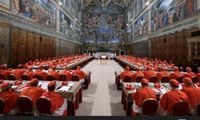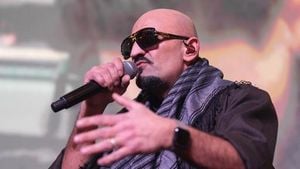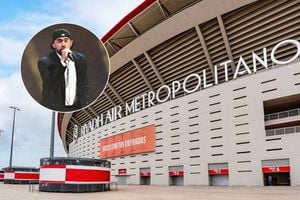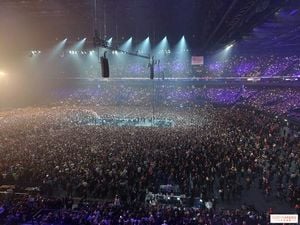On May 8, 2025, the cardinals wearing red hats began the ritual process to elect a new leader for 1.4 billion Catholics worldwide. This significant event follows the passing of Pope Francis, who died last month. The conclave commenced on the evening of May 7, marked by black smoke billowing from a specially installed chimney visible from St. Peter's Square, signaling that a Pope had not yet been elected.
No Pope in modern times has been elected on the first day of the conclave, and history suggests that results could emerge as early as the second day, with up to four rounds of voting possible. This conclave is notable for its record attendance, featuring 133 cardinals from 70 countries, a significant increase from the 115 cardinals from 48 countries in the previous conclave in 2013.
As the first day of voting concluded without a winner, thousands of believers gathered at St. Peter's Square to monitor the smoke signals. The smoke is produced by burning ballots along with chemicals: black smoke indicates no result, while white smoke will signal the election of a new Pope. Observers noted that the first ballot on the evening of May 7 did not yield a final result, but cardinals are expected to hold a maximum of two rounds of voting on Thursday afternoon, with the possibility of smoke signals appearing after 5:30 p.m. local time.
During the conclave, the cardinals are isolated from the outside world and sworn to secrecy. Their phones and computers must be left outside while they are transported between the Sistine Chapel to vote and two Vatican guesthouses for rest and meals. Cardinal Pietro Parolin of Italy, previously viewed as the number two figure in the Vatican under Pope Francis, and Cardinal Luis Antonio Tagle of the Philippines are considered top candidates for the papacy. If neither candidate secures the required two-thirds majority, the voting will shift to other contenders.
The conclave process allows for a maximum of four rounds of voting each day until a candidate achieves the necessary majority. Historical precedents suggest that electing a Pope typically requires multiple rounds; for instance, Pope Benedict XVI was elected after four rounds of voting, while Pope Francis was chosen after five rounds. This conclave is also being characterized as particularly diverse and representative. Father Enzo Del Brocco remarked to CNN, "This conclave is so diverse that we are witnessing cardinals from areas where there have never been cardinals before."
As the cardinals continue their deliberations, the anticipation builds among the faithful waiting for the white smoke that will signal the election of a new leader for the Catholic Church. The conclave's secrecy and the historical weight of the moment add to the gravity of the proceedings. With each round of voting, the hopes of millions rest on the shoulders of these cardinals, who must navigate not only their own preferences but also the expectations of the global Catholic community.
As the day progresses, many are hopeful that the conclave will yield a new Pope who can guide the Church through its current challenges and opportunities. The election process is steeped in tradition, yet it is also a reflection of the evolving nature of the Church and its leadership. Observers around the world will be watching closely, eager for the announcement that will come with the rise of white smoke from the Sistine Chapel chimney.
In the meantime, the cardinals remain cloistered, engaged in discussions and prayers, fully aware of the significance of their task. The eyes of the world are upon them, and the future of the Catholic Church hangs in the balance as they work to elect a successor to Pope Francis.




